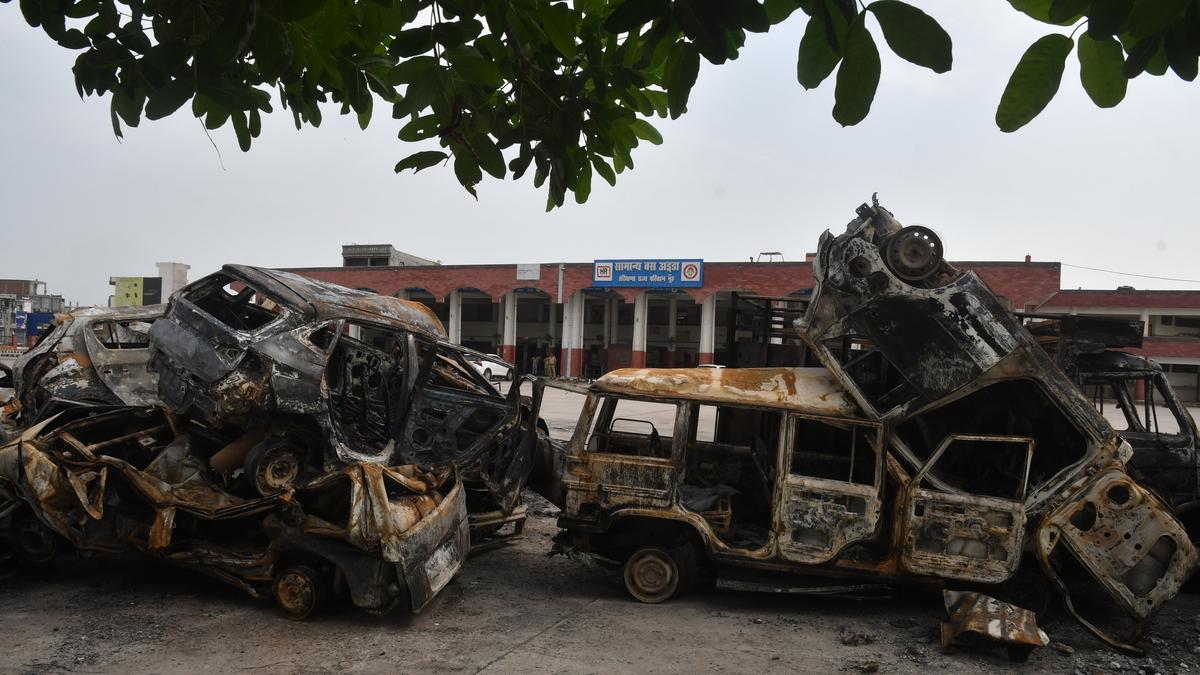
A source, a riot, and a dilemma on a WhatsApp group Premium
The Hindu
Friendliness towards a source can be misconstrued by them as an approval of their ideology or perspective on a subject
For a reporter, sources are sacrosanct. Finding the right sources, nurturing and retaining them is an important component of the job. Sometimes, in the enthusiasm to retain a good source, a journalist may go a little too far, which could have consequences. The world of journalism is full of such stories.
Everyone has their own methods of finding and retaining sources. Being a teetotaller and a non-smoker, I have always found myself at a disadvantage compared to my peers, who manage to build a rapport with people over a shared cigarette or a drink.
Editorial | A Nuh model: On Haryana and the determination of the political executive
However, I make up for this by striking a personal note with my sources. I am a patient listener. As I am not very social, I sometimes push myself to attend gatherings, functions, and condolence meetings, to make my relations with my sources seem less formal.
On occasion, however, this friendliness is misconstrued by the source as an approval of their ideology or perspective on a subject. And sometimes, when I am asked to take a position, I am forced to make a choice between keeping the source and protecting my individuality.
I found myself in this situation recently while reporting on the clashes between two communities in Nuh, in southern Haryana. The conflict began during a religious procession and quickly engulfed other parts of the State, claiming six lives.
A few days after reporting on the riots, I found myself being added to a group on WhatsApp one morning. It had been formed to seek donations for the “martyrs” of a religious community who had died in the riots. Confused, I scrolled through the list of participants in the group and found that one of my sources was the group admin.

“Writing, in general, is a very solitary process,” says Yauvanika Chopra, Associate Director at The New India Foundation (NIF), which, earlier this year, announced the 12th edition of its NIF Book Fellowships for research and scholarship about Indian history after Independence. While authors, in general, are built for it, it can still get very lonely, says Chopra, pointing out that the fellowship’s community support is as valuable as the monetary benefits it offers. “There is a solid community of NIF fellows, trustees, language experts, jury members, all of whom are incredibly competent,” she says. “They really help make authors feel supported from manuscript to publication, so you never feel like you’re struggling through isolation.”

Several principals of government and private schools in Delhi on Tuesday said the Directorate of Education (DoE) circular from a day earlier, directing schools to conduct classes in ‘hybrid’ mode, had caused confusion regarding day-to-day operations as they did not know how many students would return to school from Wednesday and how would teachers instruct in two modes — online and in person — at once. The DoE circular on Monday had also stated that the option to “exercise online mode of education, wherever available, shall vest with the students and their guardians”. Several schoolteachers also expressed confusion regarding the DoE order. A government schoolteacher said he was unsure of how to cope with the resumption of physical classes, given that the order directing government offices to ensure that 50% of the employees work from home is still in place. On Monday, the Commission for Air Quality Management in the National Capital Region and Adjoining Areas (CAQM) had, on the orders of the Supreme Court, directed schools in Delhi-NCR to shift classes to the hybrid mode, following which the DoE had issued the circular. The court had urged the Centre’s pollution watchdog to consider restarting physical classes due to many students missing out on the mid-day meals and lacking the necessary means to attend classes online. The CAQM had, on November 20, asked schools in Delhi-NCR to shift to the online mode of teaching.









